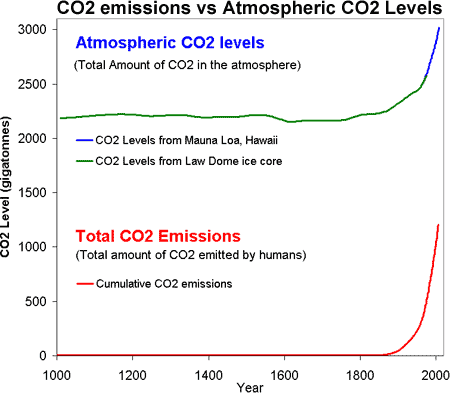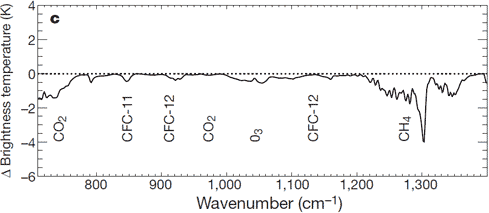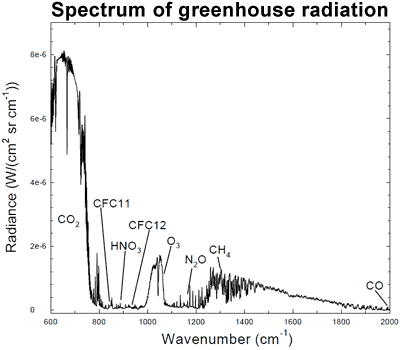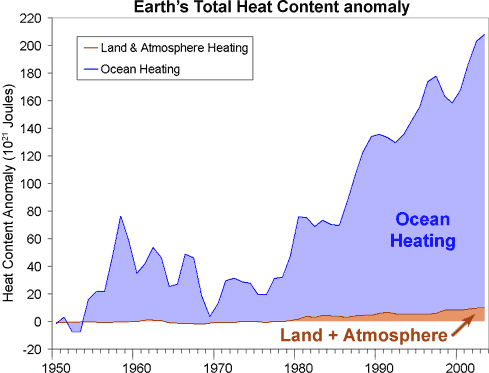 Arguments
Arguments
 Software
Software
 Resources
Comments
Resources
Comments
 The Consensus Project
The Consensus Project
 Translations
Translations
 About
Support
About
Support


Latest Posts
- Skeptical Science New Research for Week #28 2025
- Trump just gave a huge gift to China’s economy
- Fact brief - Is global warming just due to El Niño?
- The great acceleration debate
- 2025 SkS Weekly Climate Change & Global Warming News Roundup #27
- Skeptical Science New Research for Week #27 2025
- Take advantage of these tax credits before Congress kills them
- Fact brief - Are human CO2 emissions driving current global warming?
- What do the latest WMO temperature projections imply for 1.5C?
- 2025 SkS Weekly Climate Change & Global Warming News Roundup #26
- Skeptical Science New Research for Week #26 2025
- You did it! Yale's 2025 extreme weather coverage is funded
- Rebutting 33 False Claims About Solar, Wind, and Electric Vehicles - Recap
- Climate Adam - Silencing Science: Trump's War on Our Climate
- 2025 SkS Weekly Climate Change & Global Warming News Roundup #25
- Fact brief - Is modern warming just a rebound from the Little Ice Age?
- Show your Stripes Day on June 21 2025
- Skeptical Science New Research for Week #25 2025
- The role of aerosol declines in recent warming
- Sabin 33 #33 - What is the effect of hot or cold weather on EVs?
- 10 ways that Trump’s tax bill would undermine his energy promises
- 2025 SkS Weekly Climate Change & Global Warming News Roundup #24
- Fact brief - Was 1934 the hottest year in the global record?
- Skeptical Science New Research for Week #24 2025
- Climate Adam: Is China Finally Changing Its Climate Ways?
- Sabin 33 #32 - Is range restriction a problem for EVs?
- The Trump EPA tried to bury some good news
- 2025 SkS Weekly Climate Change & Global Warming News Roundup #23
- Fact brief - Are CO2 measurements reliable?
- Skeptical Science New Research for Week #23 2025
Archived Rebuttal
This is the archived Intermediate rebuttal to the climate myth "There's no empirical evidence". Click here to view the latest rebuttal.
What the science says...
|
Direct observations find that CO2 is rising sharply due to human activity. Satellite and surface measurements find less energy is escaping to space at CO2 absorption wavelengths. Ocean and surface temperature measurements find the planet continues |
The line of empirical evidence that humans are causing global warming is as follows:
We're raising CO2 levels
Human carbon dioxide emissions are calculated from international energy statistics, tabulating coal, brown coal, peat, and crude oil production by nation and year, going back to 1751. CO2 emissions have increased dramatically over the last century, climbing to the rate of 29 billion tonnes of CO2 per year in 2006 (EIA).
Atmospheric CO2 levels are measured at hundreds of monitoring stations across the globe. Independent measurements are also conducted by airplanes and satellites. For periods before 1958, CO2 levels are determined from air bubbles trapped in polar ice cores. In pre-industrial times over the last 10,000 years, CO2 was relatively stable at around 275 to 285 parts per million. Over the last 250 years, atmospheric CO2 levels have increased by about 100 parts per million. Currently, the amount of CO2 in the atmosphere is increasing by around 15 gigatonnes every year.

Figure 1: Atmospheric CO2 levels (Green is Law Dome ice core, Blue is Mauna Loa, Hawaii) and Cumulative CO2 emissions (DOE Data Explorer). While atmospheric CO2 levels are usually expressed in parts per million, here they are displayed as the amount of CO2 residing in the atmosphere in gigatonnes. CO2 emissions includes fossil fuel emissions, cement production and emissions from gas flaring.
Humans are emitting more than twice as much CO2 as what ends up staying there. Nature is reducing our impact on climate by absorbing more than half of our CO2 emissions. The amount of human CO2 left in the air, called the "airborne fraction", has hovered around 43% since 1958.
CO2 traps heat
According to radiative physics and decades of laboratory measurements, increased CO2 in the atmosphere is expected to absorb more infrared radiation as it escapes back out to space. In 1970, NASA launched the IRIS satellite measuring infrared spectra. In 1996, the Japanese Space Agency launched the IMG satellite which recorded similar observations. Both sets of data were compared to discern any changes in outgoing radiation over the 26 year period (Harries 2001). What they found was a drop in outgoing radiation at the wavelength bands that greenhouse gases such as CO2 and methane (CH4) absorb energy. The change in outgoing radiation was consistent with theoretical expectations. Thus the paper found "direct experimental evidence for a significant increase in the Earth's greenhouse effect". This result has been confirmed by subsequent papers using data from later satellites (Griggs & Harries 2004, Chen et al. 2007).

Figure 2: Change in spectrum from 1970 to 1996 due to trace gases. 'Brightness temperature' indicates equivalent blackbody temperature (Harries 2001).
When greenhouse gases absorb infrared radiation, the energy heats the atmosphere which in turn re-radiates infrared radiation in all directions. Some makes its way back to the earth's surface. Hence we expect to find more infrared radiation heading downwards. Surface measurements from 1973 to 2008 find an increasing trend of infrared radiation returning to earth (Wang 2009). A regional study over the central Alps found that downward infrared radiation is increasing due to the enhanced greenhouse effect (Philipona 2004). Taking this a step further, an analysis of high resolution spectral data allowed scientists to quantitatively attribute the increase in downward radiation to each of several greenhouse gases (Evans 2006). The results lead the authors to conclude that "this experimental data should effectively end the argument by skeptics that no experimental evidence exists for the connection between greenhouse gas increases in the atmosphere and global warming."

Figure 3: Spectrum of the greenhouse radiation measured at the surface. Greenhouse effect from water vapor is filtered out, showing the contributions of other greenhouse gases (Evans 2006).
The planet is accumulating heat
When there is more energy coming in than escaping back out to space, our climate accumulates heat. The planet's total heat build up can be derived by adding up the heat content from the ocean, atmosphere, land and ice (Murphy 2009). Ocean heat content was determined down to 3000 metres deep. Atmospheric heat content was calculated from the surface temperature record and heat capacity of the troposphere. Land and ice heat content (eg - the energy required to melt ice) were also included.

Figure 4: Total Earth Heat Content from 1950 (Murphy 2009). Ocean data taken from Domingues et al 2008.
From 1970 to 2003, the planet has been accumulating heat at a rate of 190,260 gigawatts with the vast majority of the energy going into the oceans. Considering a typical nuclear power plant has an output of 1 gigawatt, imagine 190,000 nuclear power plants pouring their energy output directly into our oceans. What about after 2003? A map of of ocean heat from 2003 to 2008 was constructed from ocean heat measurements down to 2000 metres deep (von Schuckmann 2009). Globally, the oceans have continued to accumulate heat to the end of 2008 at a rate of 0.77 ± 0.11 Wm?2, consistent with other determinations of the planet's energy imbalance (Hansen 2005, Trenberth 2009). The planet continues to accumulate heat.

Figure 5: Time series of global mean heat storage (0–2000 m), measured in 108 Jm-2.
So we see a direct line of evidence that we're causing global warming. Human CO2 emissions far outstrip the rise in CO2 levels. The enhanced greenhouse effect is confirmed by satellite and surface measurements. The planet's energy imbalance is confirmed by summations of the planet's total heat content and ocean heat measurements.
For more evidence that humans are causing global warming, check out The human fingerprint in global warming.
Updated on 2016-10-23 by John Cook.
THE ESCALATOR

(free to republish)
























































